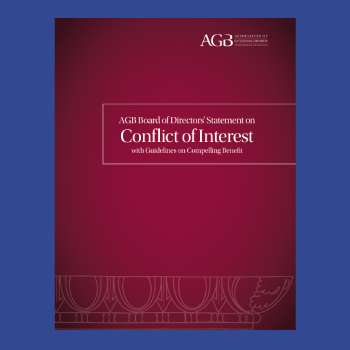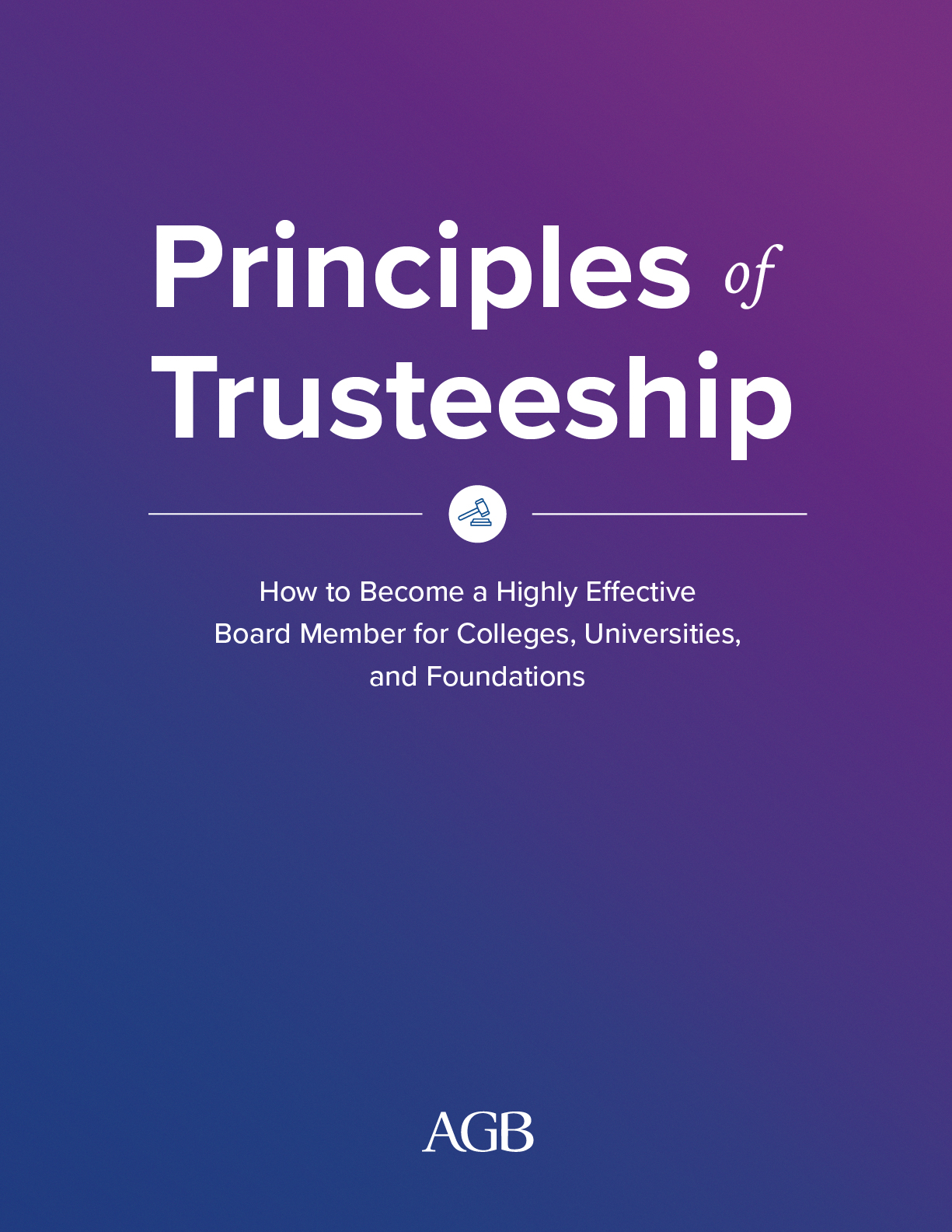Principle 4:
Conduct yourself with impeccable integrity.
Principle 4 supports the fundamental function of leading by example through standards that ensure public trust in both the fiduciaries and the institution or foundation. To ensure transparency, you must:
- Act in the institution’s best interests, putting it ahead of your personal preferences and political allegiances. Regardless of how you were selected, as a board member you do not “represent” a particular group of constituents.
- Preemptively disclose conflicts—actual and perceived—and dualities of interest. As a member of the board, err on the side of disclosing more—rather than less—information and then step aside from voting and, sometimes, discussions.
- Uphold the highest ethical standards. Model the values, ethics, and morals that the board expects of the administration, faculty, and students.
“Some board members uphold their gubernatorial or electorate responsibilities as first and foremost on their priority list. Too many stories can be told of fiduciary boards not exercising independence, which is not to say they are bad board members. It simply means the conflicts need to be managed or they need to be better oriented to their role.
Their priority should be what’s best for the institution.”
—President, Public University
Questions for self-reflection.
- To whom are you accountable as a board member? To whom else do you feel accountable?
- What personal and professional relationships do you have that could interfere with your ability to make decisions in the best interests of the college, university, or foundation?
- What organizational information is appropriate for you to share with others? What must remain confidential? How do you make this distinction?
- How do your behaviors, actions, and reputation reflect on the institution on whose board you serve?
- What ethical expectations do you have of your fellow board members?
Resources for deeper learning.
Forum: Integrity in Managing Financial Exigency
Trusteeship Magazine Article
This guide conveys the essence of highly effective trusteeship in a concise, easy-to-use format. It defines the attitudes and actions of highly effective board members, and provides insight into three fundamental functions:
- Understand governance by embracing all of your responsibilities in a structure of shared leadership.
- Lead by example by upholding the highest standards of integrity.
- Think strategically by focusing on what matters most to the long-term success of the whole enterprise.








